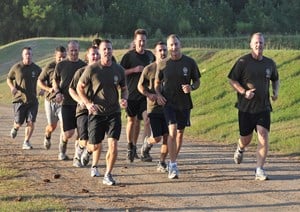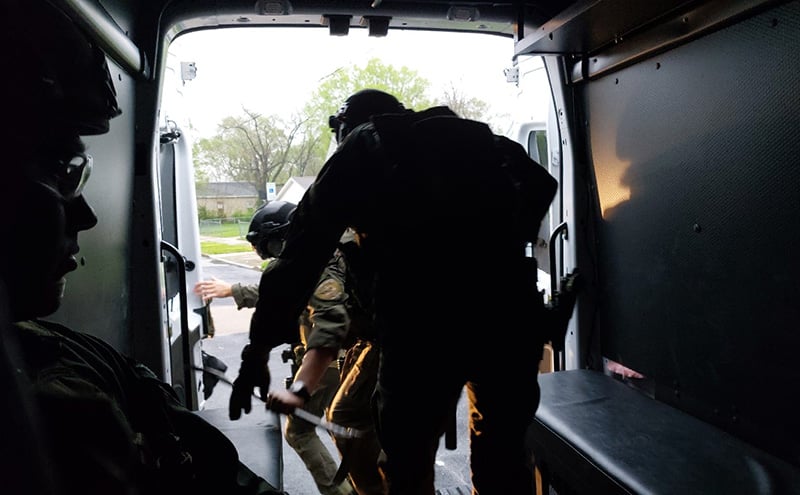
Photo Essay – John Wipfler, MD
(Photos taken by Dr. John Wipfler, except for Photo 6 which was taken with Dr. Wipfler’s phone by an assistant to the VIP – unknown name)
Tactical Medicine Photographs and the stories that go with them.
This is dedicated to the law enforcement personnel in our world, who protect and keep us safer.

Photo 1: This past summer, I took an evening photograph. One of the most beautiful sunsets I’ve witnessed, after spending a good portion of the day volunteering at our local tactical team’s training. Something very satisfying about training together with a group of people whose mission it is to help make our wonderful world safer and more secure. A small supportive role, as a tactical physician, but one that requires education, dedication, a unique skill set, at times necessitating a combat mindset, along with truly caring for our fellow citizens, with determination to perform one’s mission with excellence, lightning speed, and passion. Something about this just seems right, like taking time to appreciate the amazing wonders of our world.
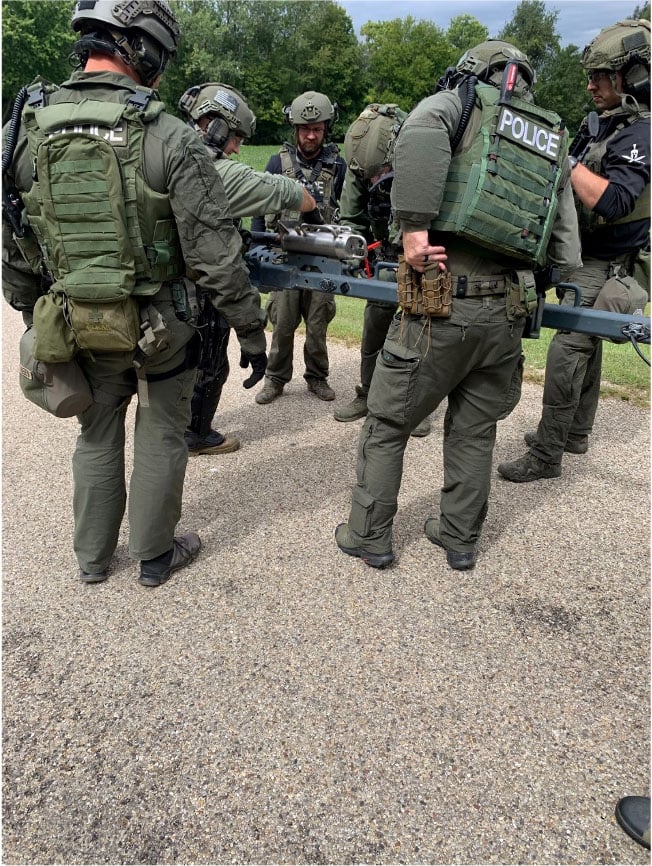
Photo 2: Installing chemical munition on Bearcat ram. This photo was taken 5 days ago. The day started at 08:00 with routine tactical team training, and after less than 2 hours of entry training, the team was activated for a real-world mission, about 10 miles away, a barricaded gunman with a hostage. The "blue" training gear was replaced with real bolts in rifles, and the team’s firearms loaded with real ammunition, and the team re-deployed to the incident command center, then ordered to designated locations at the perimeter of the house and into several vehicles. Marksmen set up in their hides. After 5 hours, use of negotiators, electronic support, interface with state, county, city, and other LE officers, armored vehicles, chemical munitions, and a bit of luck, the crisis was ended, without any injury or death.
Having the proper gear and ballistic protection is critical to mission success.
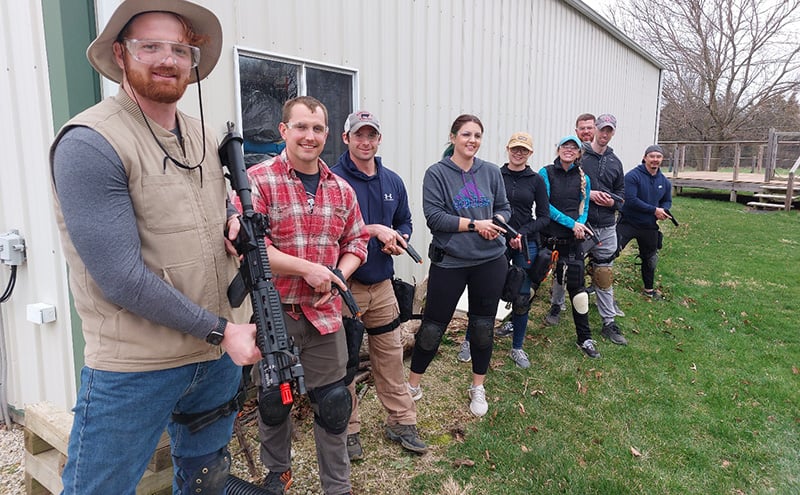
Photo 3: Since 1999, our emergency medicine residency program has educated over 85% of our resident physicians in tactical and law enforcement medical support. Offered twice a year, the elective 2-week block of instruction includes the key elements of close-up medical support. After learning the essentials of multiple tactical medicine topics, including firearms safety and marksmanship, it’s time for scenario-based realistic training. A med kit on one hip, and an airsoft training pistol on the other. This group includes two of our paramedic firefighters from our community, along with second and third year EM resident physicians. As you can tell from the smiles, in addition to learning life-saving skill sets, it’s just a very good way to spend the afternoon together. All learned well and awoke the next day with a greater appreciation for what the women and men in Blue put at risk, to help keep our world safer. And enhanced skill sets that can save lives, including their own.
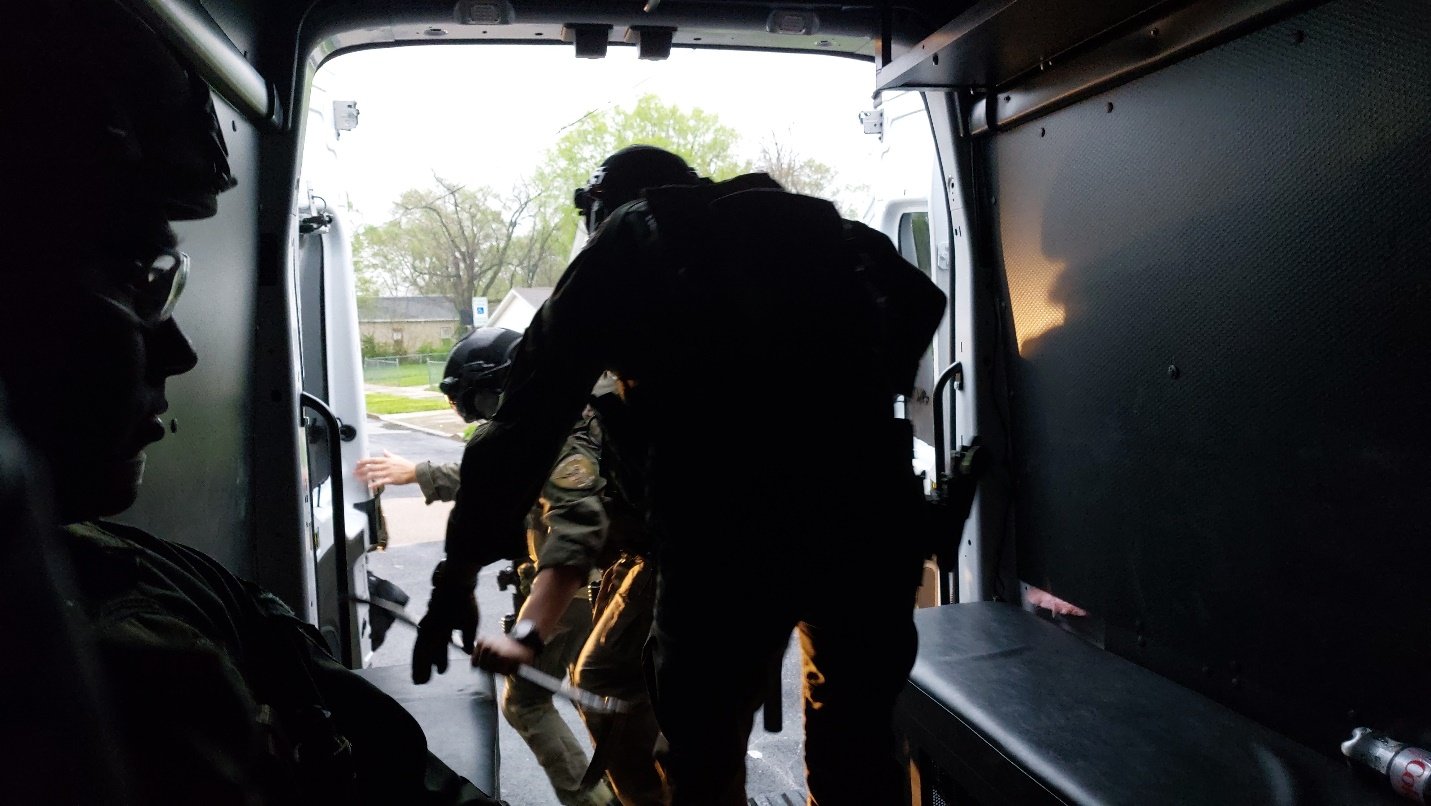
Photo 4: Go Time: The tactical team on this 2022 high-risk search / arrest warrant service includes over 30 people, including the police tactical element, negotiators, bomb squad, tactical medicine / TEMS, patrol officers, K-9 team, detectives, and others. Two buildings, multiple suspects, and likely 2 women and unknown number of children who are inside (at least 2). Two suspects primarily, one who carries 2 handguns with him at all times. Heroin and fentanyl being sold. Three narcotic deaths in our town this past week. Possibly a stolen AK-47 inside.
Who wants to go on this mission? How will it end? Will everyone go home at the end of the day? (Mission was a total success, justice served, loved ones hugged tighter at sunset.)
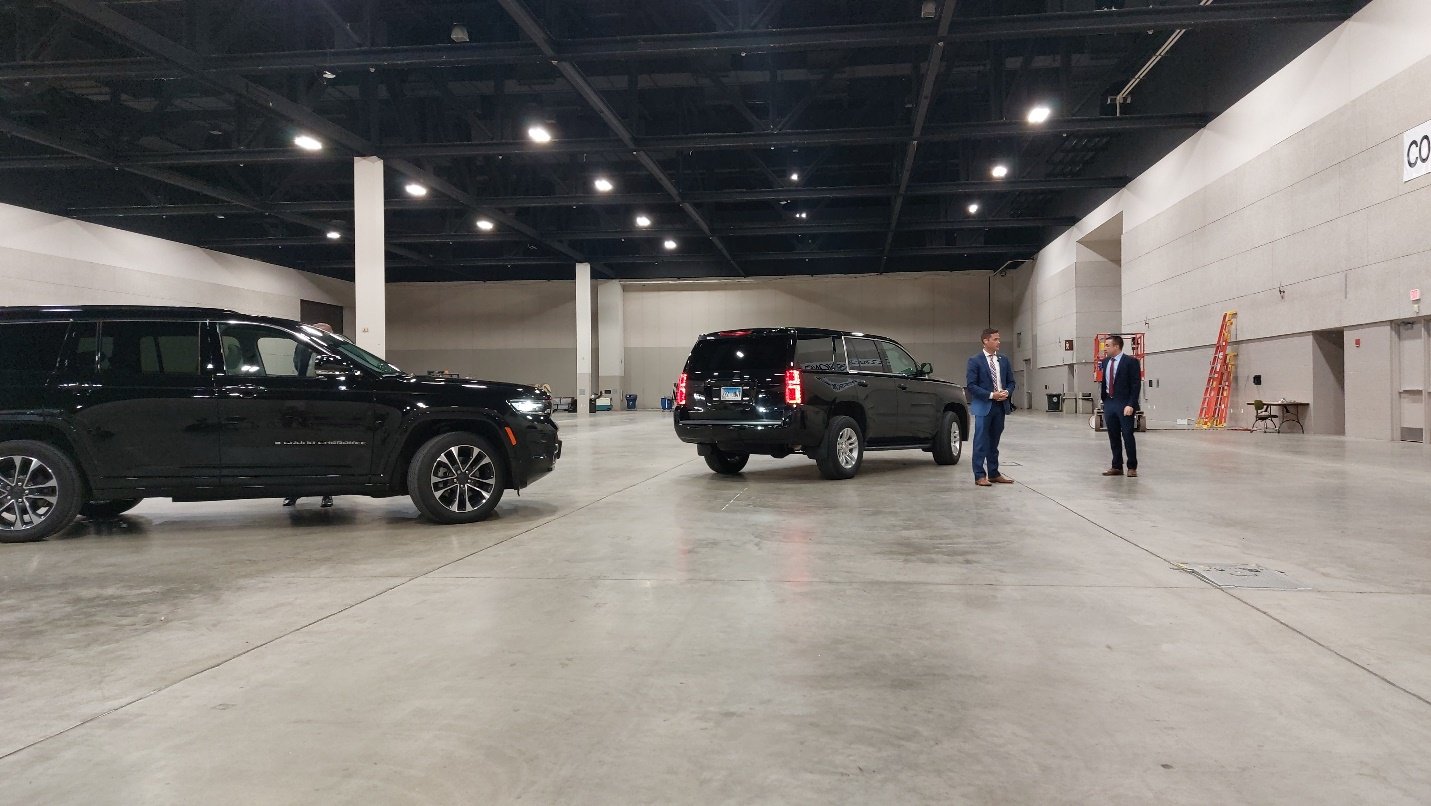
Photo 5: A distinguished VIP visited our city this past summer. A 20-person law enforcement element is tasked with providing security at the large civic center auditorium. Multiple agencies involved, pre-planning, coordination, communications, back-up plans, immediate action drills arranged, contingency plans made, proper pre-positioning of security and med response team, and now it’s showtime. Dignitary protection.
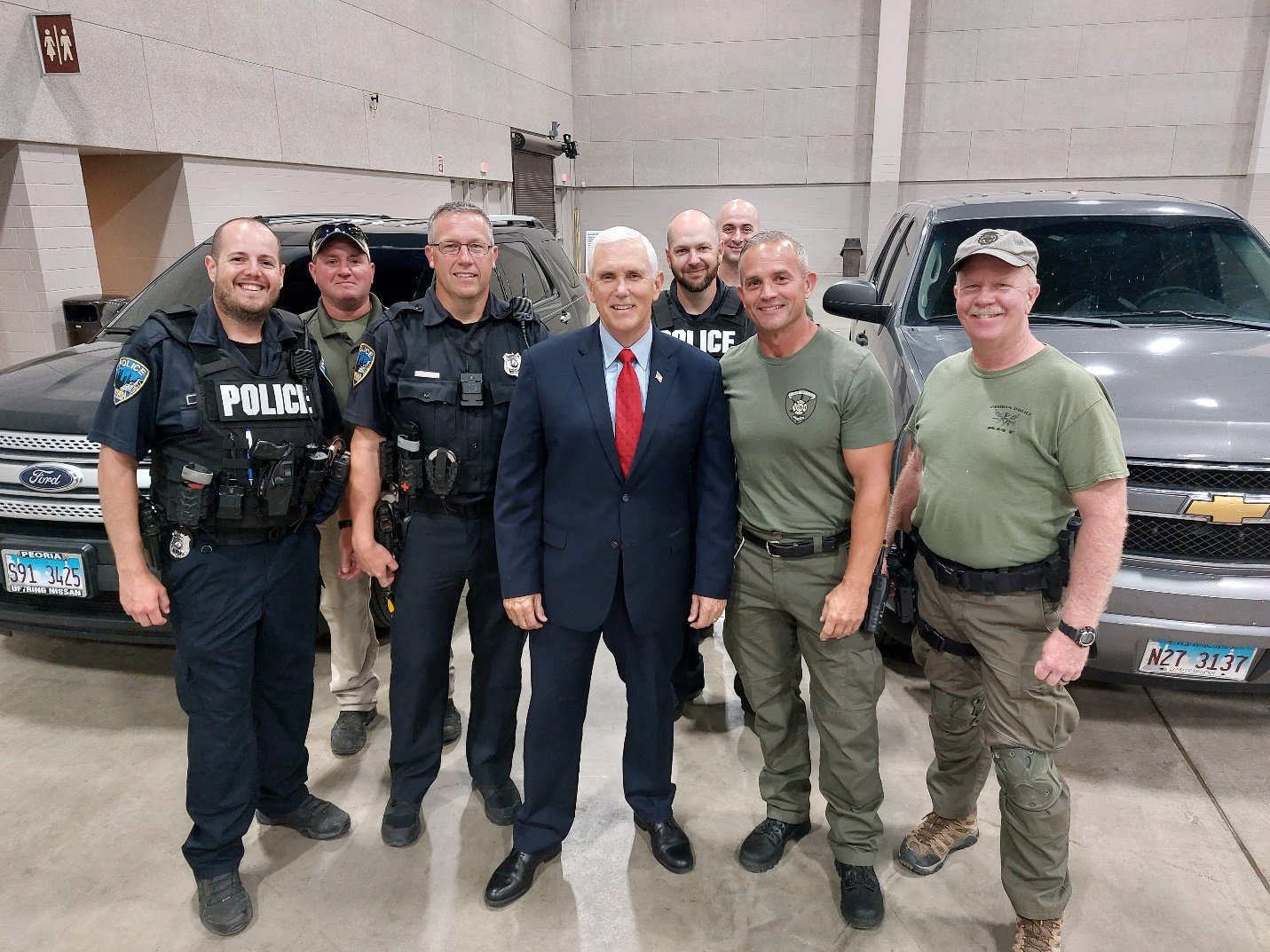
Photo 6: When the dignitary arrived in our city, and he stepped out of his vehicle, the crowd was waiting, and the entrance to the auditorium was located less than 30 feet away, and no media were visible. Just a quiet receiving area, with seven LEOs and a few TMPs (tactical medical providers) about 40 yards away. He stepped out, looked around, and he made the decision, and he walked directly to us officers / deputies with a relaxed and confident gait. He walked up to the police officer closest, introduced himself humbly, and asked each of us our name, and firmly shook each of our hands, looking us sincerely in our eyes as he did so. Friendly conversations, a few stories, an honest smile, and he thanked us for doing what we do. A friendly goodbye, and he left, escorted to the awaiting crowd of 500 for dinner.
We did what we do, quietly remaining on full alert nearby, knowing our roles, keeping a secure perimeter, and remaining sharp. Med gear nearby, hopefully never to be used that day. After he was on the plane, we went back to our daily routines.
Why did he walk out of his way to thank us, without any press or other people to impress nearby?
I know exactly why. This is the type of leader I greatly respect and admire.
The end.
JW


